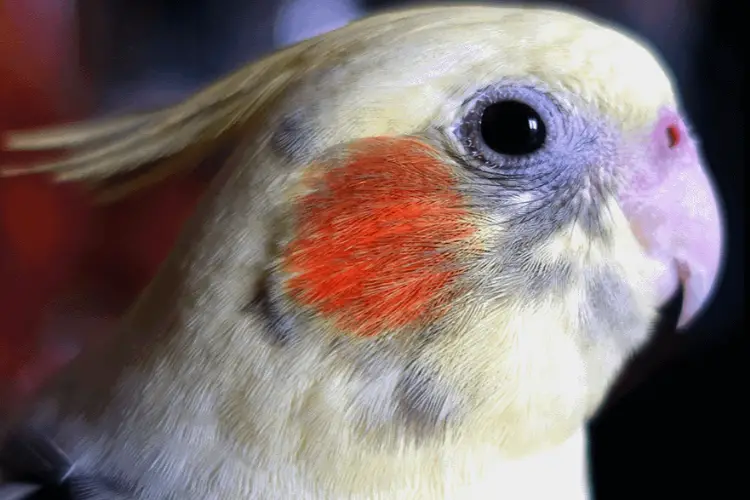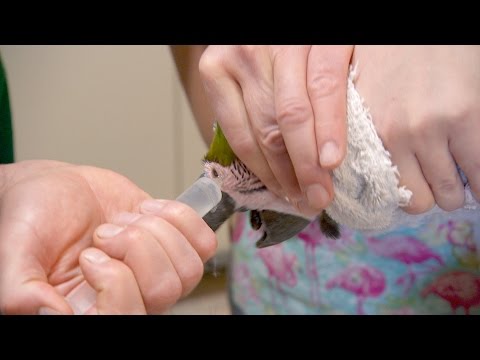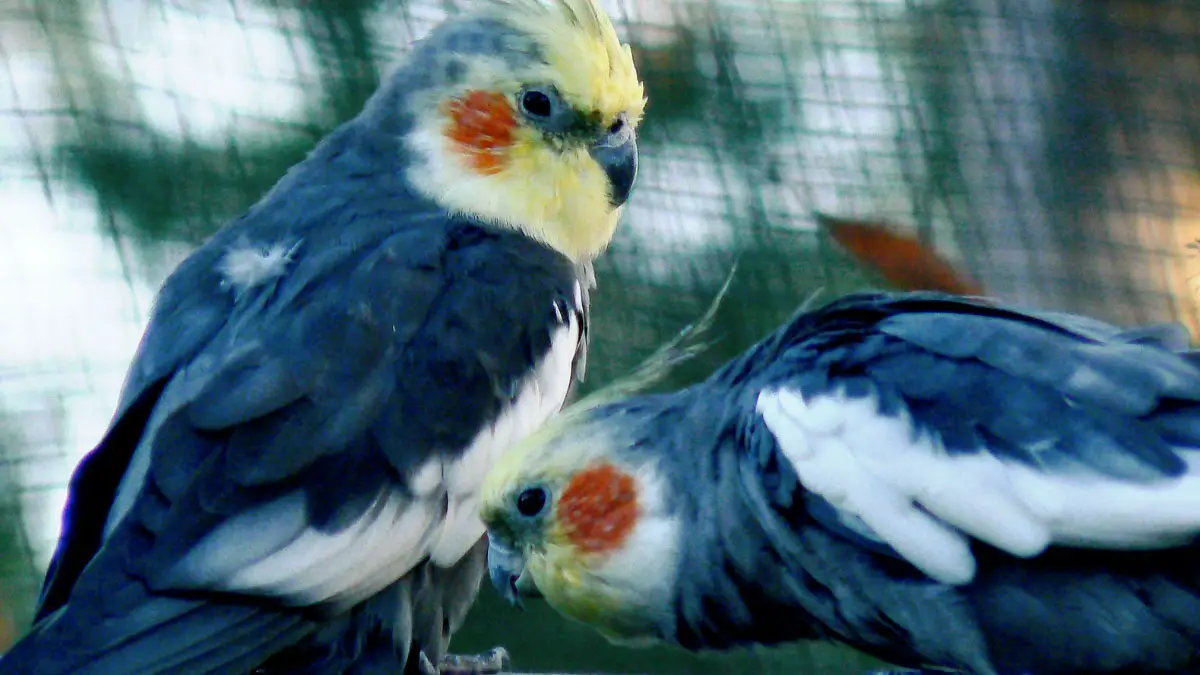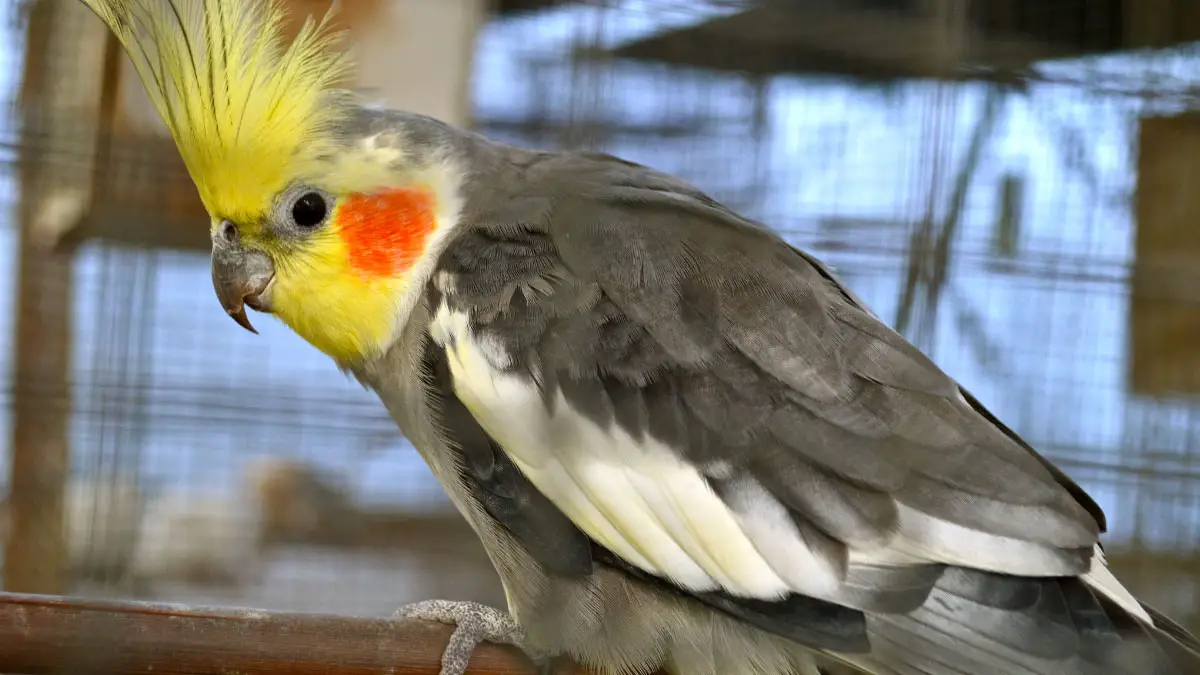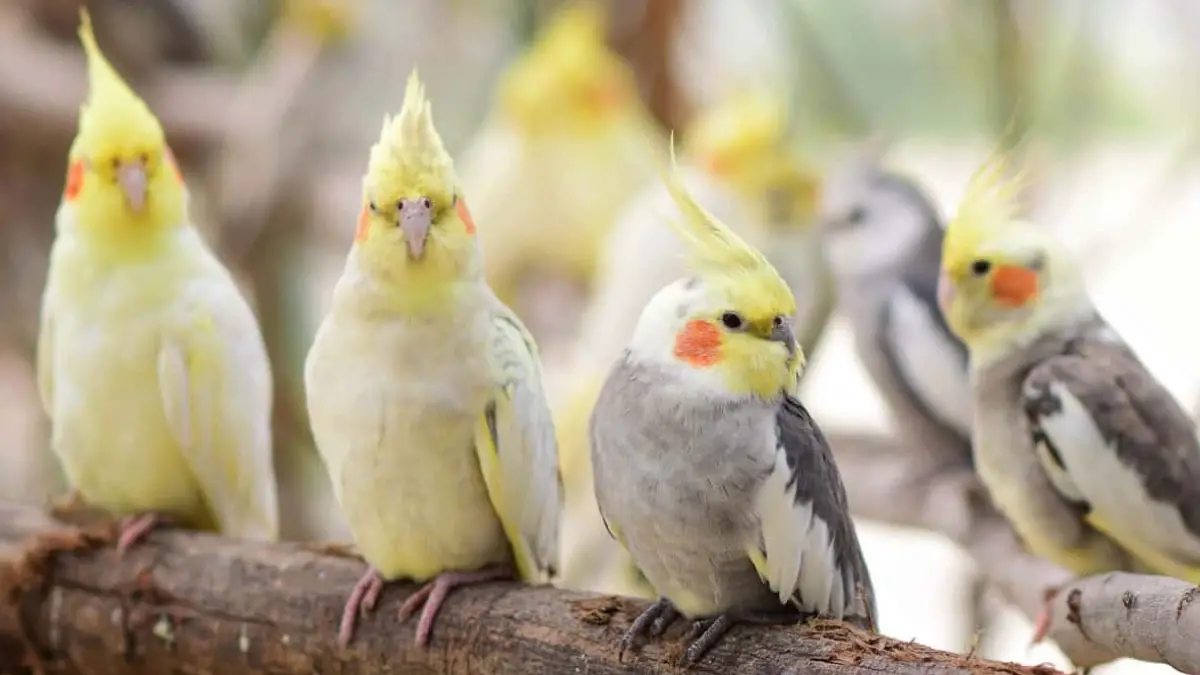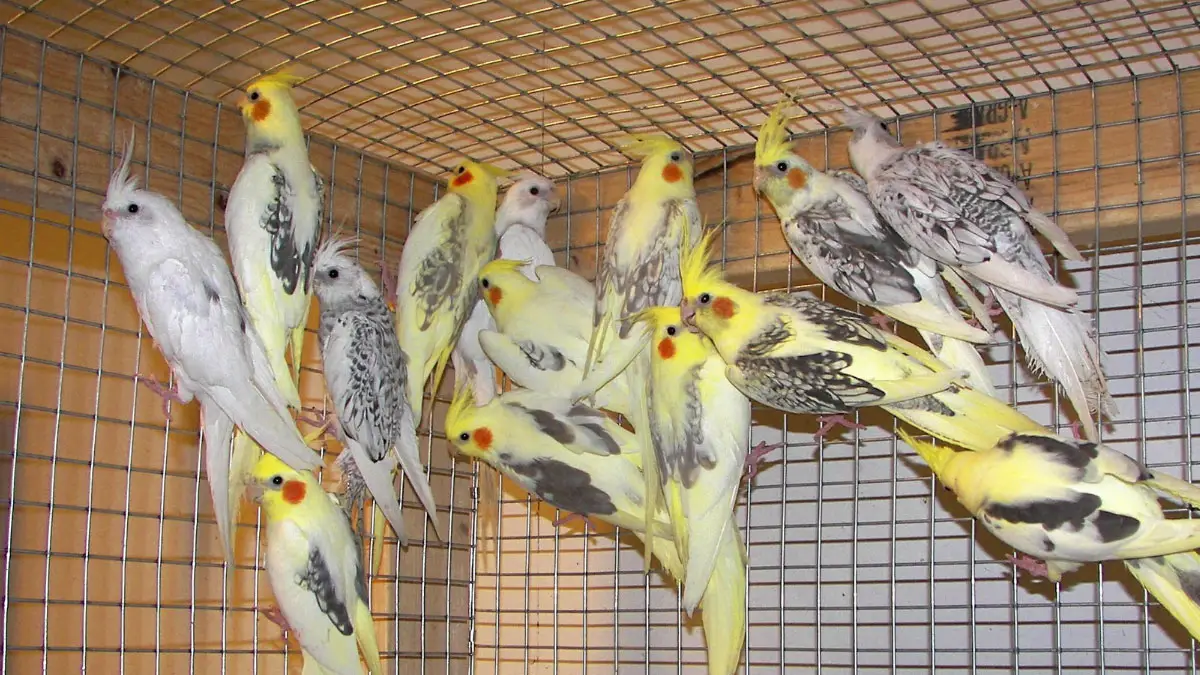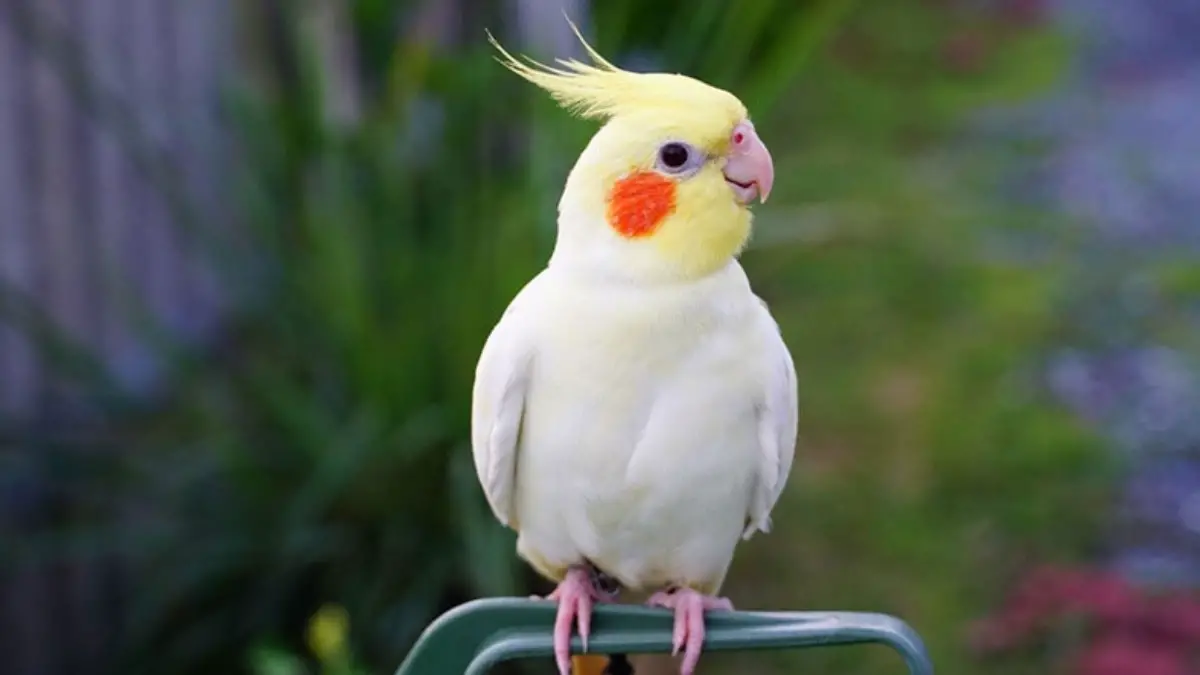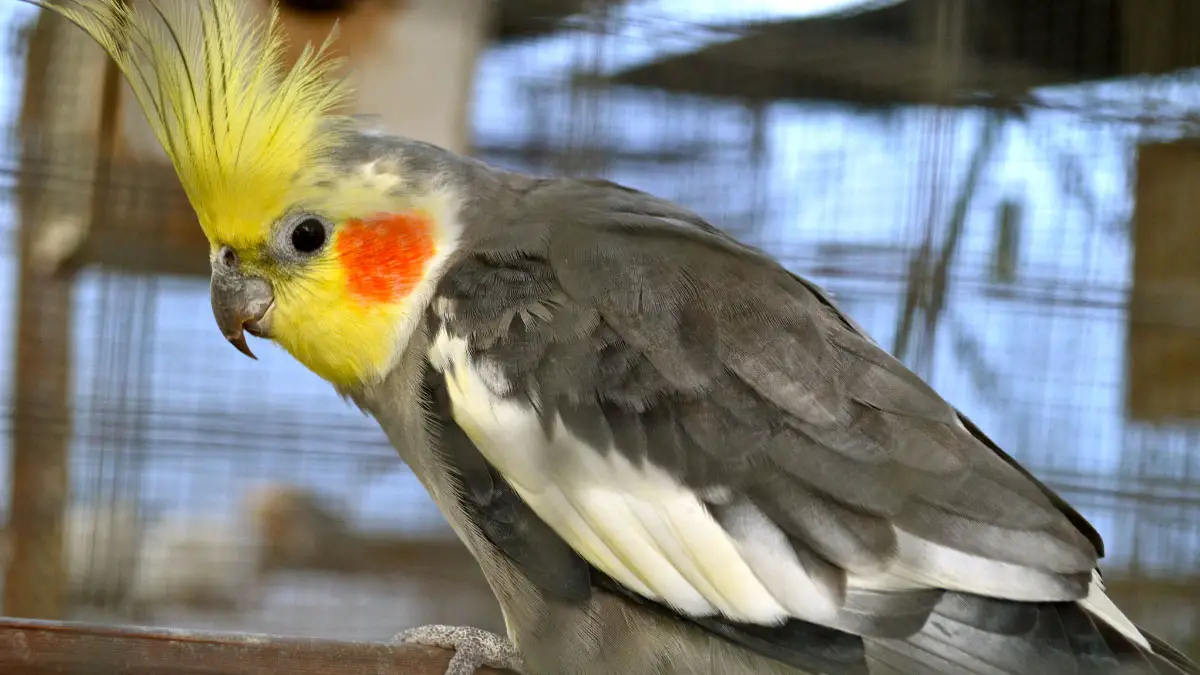As a cockatiel owner, you always want your bird to be in perfect health. At times you will notice signs that might indicate otherwise. One of the signs is when your cockatiel has a red nose. Let’s consider whether it should be a cause for alarm and what you can do about it.
Why is my cockatiels nose red? Your cockatiel’s nose will be red if it has a respiratory infection or sinusitis. In addition, if the cockatiel’s nostrils are inflamed, the blood vessels surrounding them will dilate, resulting in redness. It could also be a blood clot caused by a fight or the cockatiel using its claws to remove dust from its nose.
Cockatiels are prone to nose problems. They can be fatal, so if you notice your cockatiel’s nose turning red, take it to the vet immediately. This article will teach you everything you need about caring for cockatiel nostrils.
Why Is My Cockatiel’s Nose Red?
A red nose in cockatiels means one thing: they have a respiratory infection. Cockatiels are incredibly prone to nasal infections. Dust, parasites, bacteria, or viruses cause these infections. Normal cockatiel nostrils, known as nares, should be dry and smooth. There should be no discharge or sores surrounding the two nares.
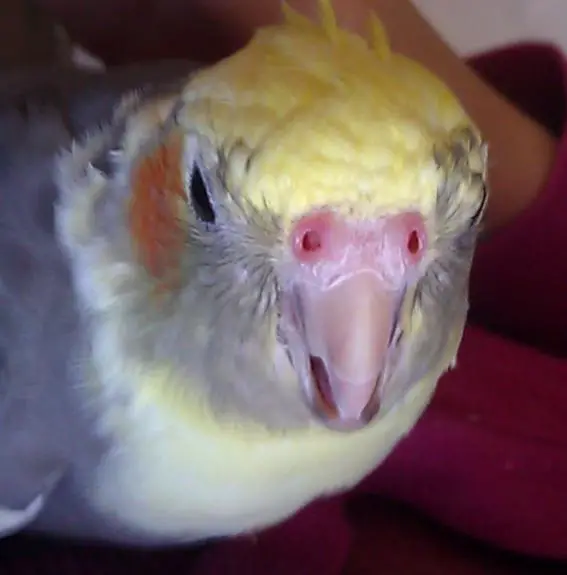
If the nose is red, swollen, blocked, or wet, your cockatiel may suffer from an infection. It is advisable to act quickly and take your cockatiel to a veterinarian. A red nose might also result from the cockatiel injuring itself when removing debris from its nostrils. Cockatiels use their claws to eliminate any foreign materials from their nostrils.
Environmental factors cause most causes of infections. So, it is up to you to ensure the cockatiel’s surroundings are clean and conducive for your cockatiel. That way, your cockatiel will be free from a red nose and other nasal infections. Let us dig deeper into the causes of nasal ailments.
What Are The Reasons For A Cockatiel Nose Infection?
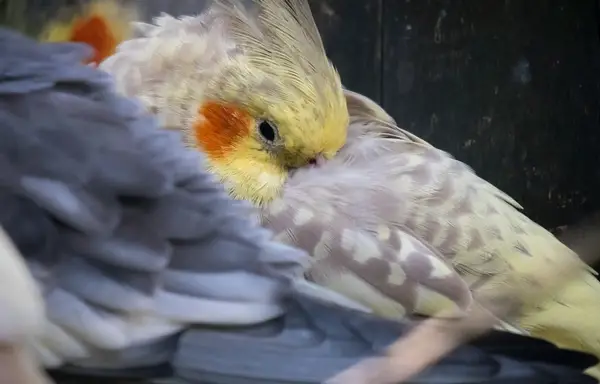
Here are five reasons that might cause your cockatiel’s nose to become red and infected.
1. Foreign particles
Dust, feathers, pollen, and food debris are foreign particles. When they enter the cockatiel’s nose, the bird attempts to expel them by sneezing or using its claws. In the process, the cockatiel may injure itself, turning the nostril red. If debris accumulates in the cockatiel’s nose for an extended period, it becomes a breeding ground for bacteria and fungi.
2. Infections caused by bacteria or fungi
Cockatiels mainly get infections from recycled air. We primarily use air conditioning during hot seasons to cool our houses. Air conditioners can house bacteria and fungi, which may be dispensed into the air once you turn them on.
The cockatiels will inhale the contaminants, which might cause them to be severely sick. The cockatiel’s nostrils are very narrow, so it does not take long for the fungi or bacteria to accumulate.
Also, a cockatiel with a vitamin A deficiency is susceptible to bacterial infections. That is because vitamin A is responsible for strengthening a bird’s immunity.
If you think your cockatiel has a bacterial or fungal infection, take it to a vet for further examinations before the condition becomes severe.
3. Parasites
The most common parasites that affect cockatiels are mice. They suck and dig into the cockatiel’s head, leading to the emergence of painful sores. The cockatiel’s skin begins to crust, and a whitish residue forms as the mites dig deeper. If the mites infest the nostrils, the nostrils become swollen and might even redden.
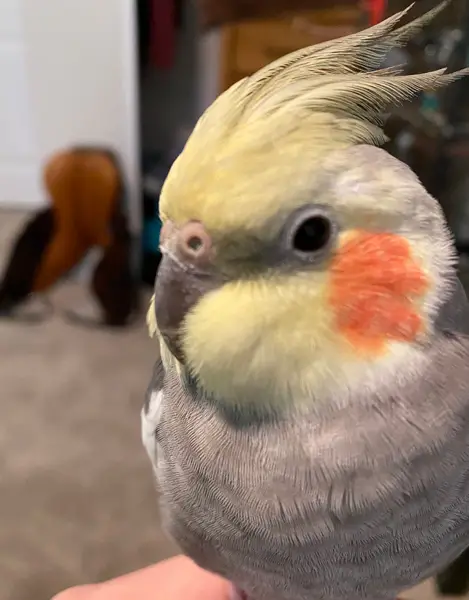
You must eliminate mites as soon as you notice them on your cockatiel. The cockatiel develops beak abnormalities and other severe health conditions if left unattended.
4. Humidity
In the wild, cockatiels are used to humid conditions. So, even in captivity, you are required to mimic their natural environments. However, many homes are too warm or cold, and we usually use air conditioners to modulate the conditions.
The disadvantage of air-conditioned air is that it is too dry. That means the cockatiels become even more vulnerable to respiratory diseases. Many cockatiel owners will use a humidifier to moisturize the air to counter this. However, if you do not clean electric humidifiers, they might dispense dust or accumulate mineral deposits in the atmosphere.
When the cockatiel breathes the dust and minerals, it develops nasal problems. Also, too much humidity can lead to mildew, which is also a breeding ground for bacteria or fungi.
5. Toxic chemicals
Cockatiels are susceptible birds. They react severely to toxic chemicals, such as strong-smelling detergents or aerosolized air fresheners. These chemicals can cause irritation and inflammation leading to a red nose in cockatiels.
Also read: Why Is My Cockatiel Grinding Its beak?
Sick Vs. Healthy Cockatiel Nostrils
Healthy cockatiels’ nostrils are smooth and perfectly rounded with no bumps or lesions. You can also see that inside the nostrils; there is no discharge or any stuck substances such as boogers. The area around the nostrils is usually dry with no stains.
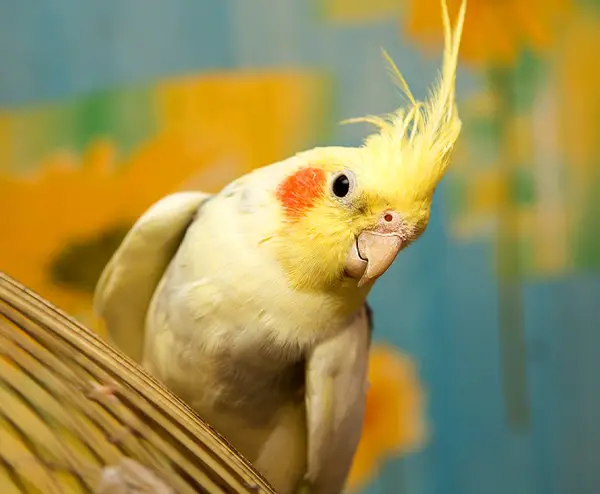
The following signs can characterize cockatiels sickness;
Cockatiel nose discharge
Sick cockatiel nostrils will often be wet due to discharge. You will observe that the cockatiel’s nasal area will have a brown discoloration due to the nasal discharge. Bacteria, chlamydia, and fungi mainly cause it.
The most common bacterial disease causing nasal discharge is Psittacosis. It affects the cockatiel’s nostrils, which results in irritation and inflammation. You should take the cockatiel to the vet immediately to prevent the disease from spreading to the bird’s beak.
Another type of discharge is boogers. Typically, nose discharge is brownish, thin, and transparent. However, boogers are a blackish and thick discharge indicating that the infection has worsened.
Clogged nostrils
If cockatiels inhale debris such as feathers, prolonged exposure to perfume, dust, or smoke, their nostrils become clogged. The stuck substances in the cockatiel’s nose lead to bacteria multiplication. The more the bacteria, the worse the cockatiels illness gets.
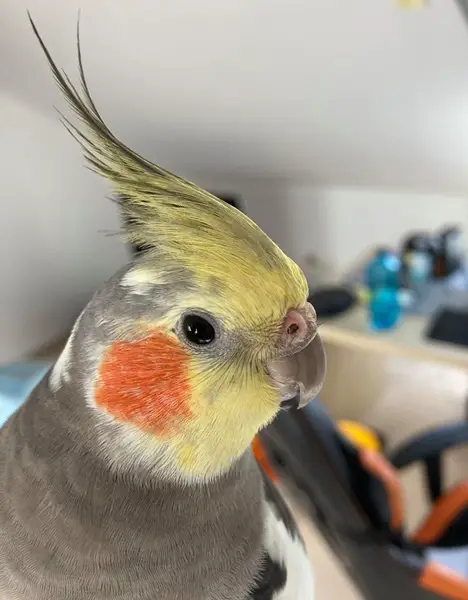
Mostly, clogged nostrils are a symptom of an upper respiratory tract infection. Your cockatiel cannot breathe through its nose and might even choke when trying to intake air through its mouth. So, if you notice that, ensure you take the bird to the veterinarian immediately.
Runny nose
A runny nose will mainly accompany red eyes, a wet nose, a red, inflamed nose, and sneezing. Allergies or infections cause it. As I mentioned, cockatiels are sensitive; any strong-smelling perfume or detergent will make them develop nasal complications.
The most common infections that cause a runny nose are Aspergillosis and Candida. These diseases can also affect the cockatiel’s beaks and digestive tracts if not treated.
Swollen nose
When your cockatiel has a viral infection such as Newcastle disease, its nostrils become swollen. Viral infections spread very fast, so if you notice your cockatiels’ nose is swollen, the condition has worsened.
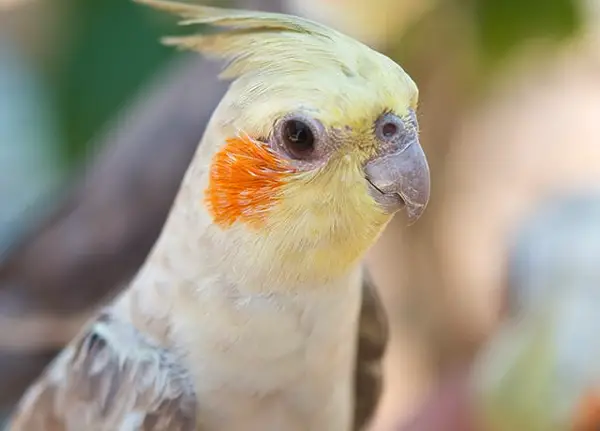
You might notice other signs such as lethargy, wheezing, ruffled feathers, and the cockatiel mainly stays at the bottom of the cage. Do not overlook inflamed nostrils; ensure you take the cockatiel to a vet.
Discoloration
It occurs when nose discharge sticks on the cockatiel’s care. It is a result of bacterial or fungal infections. Studies show that unbalanced hormones and vitamin A deficiency can cause cockatiel discoloration.
How Do I Clean A Cockatiel Nose?
Cockatiels usually clean their noses by sneezing out any stuck debris or by using their claws. If that fails, their nostrils block, resulting in a cockatiel nose infection. In such cases, you will need to assist your bird in cleaning its nose. Here are a few strategies you can use.
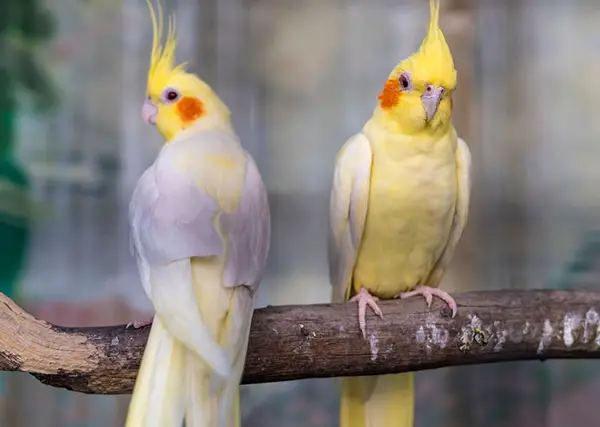
Sinus rinse
This is also known as a nasal rinse. When using a nasal rinse, you require experience. Most nasal flushes use saline solutions. Individually flush the bird’s nostrils with a syringe. Ensure that you hold the bird upside down for a successful nose flush. However, if you lack experience with nasal rinses, you should not perform one. Visit a veterinarian who will perform the procedure for you.
Earbuds or tissue paper
To remove boogers or stuck debris, you can use an earbud. Be very gentle when inserting the earbud into the bird’s nostril. Also, ensure you do not push the earbud so far into the cockatiel’s nose because it might push the debris further into the nose.
An alternative is a piece of tissue. Twist the tissue till you have a pointed end. Now, you can insert the tissue into the bird’s nostrils. Tissue paper absorbs any discharge and can flick off debris not far up the nose.
Warm steam
When you have a shower, take your bird with you. Warm steam helps your cockatiel breathe more easily. It also unclogs the cockatiel’s nose. It is the easiest method to prevent nasal problems.
Video Of a Veterinarian Performing a Sinus Rinse
Here is a video to help you understand more about a sinus rinse.
FAQs
Here are other related questions regarding cockatiel nose problems.
Yes, there are. Bacteria, fungi, or self-injury cause a bird’s red nose. Therefore, you can prevent bacterial infections by keeping the area surrounding the cockatiel’s cage clean. When cleaning the cage, be sure to use mild soap and water. Additionally, avoid using strong fragrances around your bird.
If your cockatiel is in a sanitary environment and does not have an infection, it will not feel the need to scratch its nostrils. Consequently, it will not acquire a red nose. Antibiotics and fungicides can also be used to treat a nose infection.
Provide your cockatiel with vitamin A-rich foods to enhance its immunity. Additionally, you can use humidifiers so that the air is sufficiently moist for the cockatiel. Be sure to clean your humidifier to remove any bacteria or mineral deposits. Avoid using strong-smelling detergents, perfumes, or deodorants.
Related: Why Is My Cockatiel Shaking or Shivering?
Conclusion
So, why is my cockatiel’s nose red? Infection typically causes it, or the cockatiel injures itself while cleaning its nose.
Ensure that the environment of your cockatiel is free of dust and any other debris that could cause nose irritation.
If you observe nasal discharge, obstruction, or swelling, take the cockatiel to the vet.
